For everyone who likes new products, the next two weeks will be pretty special. We have a lot of new stuff this week, and even more coming up next week. This week we've got our regular new product video, as well as a supplemental video giving a demonstration of the RedBot Kit. Be sure to watch both in their entirety!
ReplaceMeOpen
ReplaceMeClose
Want to see the RedBot Kit in action? Check out this video where Mike shows how it works and what it looks like when it's doin' its thing.
ReplaceMeOpen
ReplaceMeClose
People tend to get excited about robots. It's always satisfying to build something that moves around and does tasks. But, there's a fine line between just assembling a kit, and building from scratch. We wanted to create a product that allows you some flexibility in your design, but is easy enough that beginners can tackle putting together a robot. The RedBot is a modular robotic development platform that can be programmed in Arduino, and it's a great introduction to robotic programming and assembly.
The RedBot Kit includes the RedBot Mainboard (description below), the Magician Chassis, some line follower sensors, an accelerometer, and some hardware. The RedBot comes pre-programmed with the Optiboot (Uno) bootloader. By simply connecting a USB mini-B cable, you can program it in the Arduino IDE using our example code or your own. The sensors attach to the Mainboard and chassis to make your creation aware of its environment.
The RedBot Mainboard is a motor driver and Arduino combination with various headers and connections, eliminating the need to stack multiple shields. By using the RedBot accessory boards and your own chassis, you can design a robot to suit your needs. You can use it with the Magician chassis or provide your own. It should be able to drive any smaller 2-motor platform.
With the addition of the RedBot Accelerometer, you can add bump and motion detection. The 3-axis accelerometer attaches directly to the mainboard and examples included with the RedBot Arduino Library.
If you want to build a line-follower or detect nearby objects, you might want to add some Line Follower Sensors. These little guys attach to your chassis and can either detect transitions from light to dark (and vice versa) or nearby objects (to stop it from running into a wall or falling off a ledge). The sensor works by detecting reflected light coming from its own infrared LED. By measuring the amount of reflected infrared light, it can detect transitions from light to dark (lines) or even objects directly in front of it.
We've been carrying our big dome push-buttons for years now. But what if you need a lot of them and don't really feel like spending $10? This week we have another option for you. The 'economy' dome buttons are less expensive, with a bit less build quality. Sometimes you just need a cheap button. Other times, you want something a bit sturdier. Now you have a choice. The new buttons come in classic red, emerald green, crisp white, canary yellow, and sapphire blue.
We're now selling Cubelets individually. Previously, we only sold the kit and the battery charger. Now you can buy every Cubelet individually and build your own kit. The Cubelets are separated into three categories, Sense Cubelets (temperature, distance, knob, and brightness), Think Cubelets (minimum, inverse, maximum, passive, blocker, battery, and Bluetooth), and Action Cubelets (drive, rotate, speaker, flashlight, and bar graph).
Lastly, we have a new revision of the ATmega128RFA1 development board. If you're not familiar with the ATmega128RFA1, it's a microcontroller and RF transceiver all in one. We've redesigned the board based on your suggestions. The new form factor allows you to use it just like an Arduino, shields and all!
That's it for this week. But rest assured, we will have many more new products next week. They're already starting to pile up on my desk. Thanks for reading and see you next week!
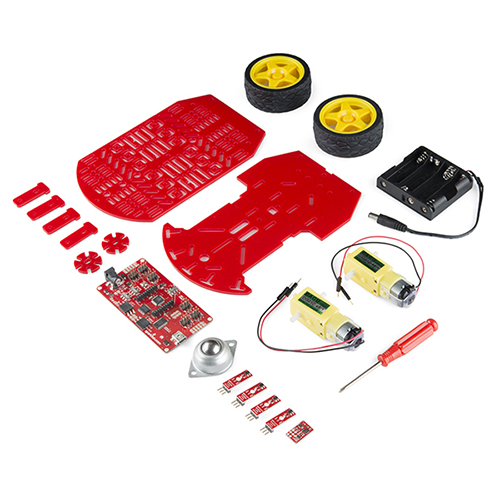
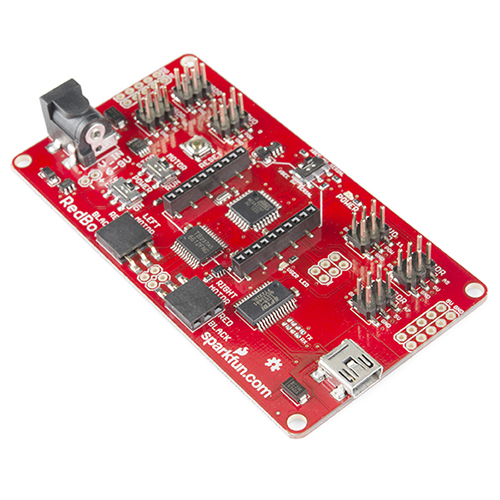
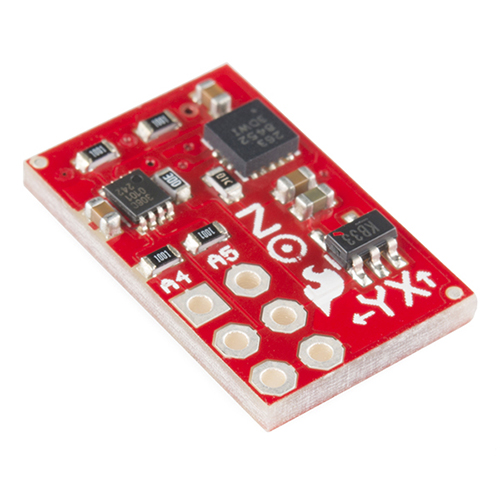

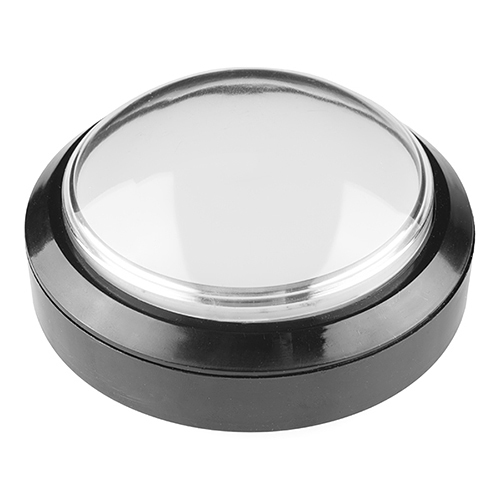
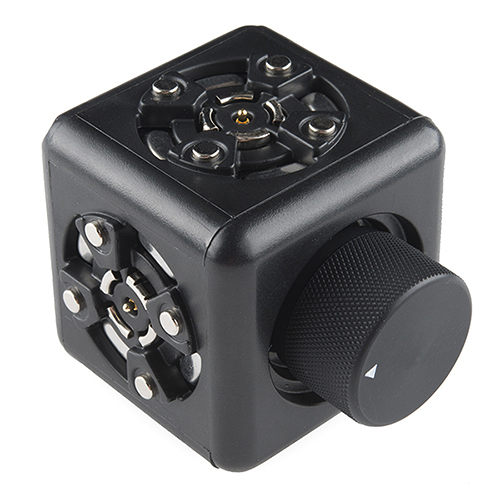
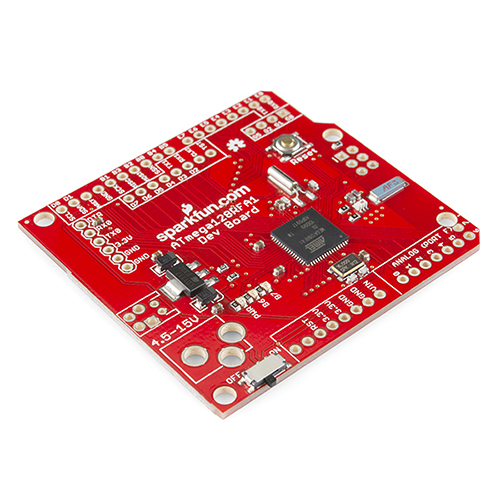






these cublets are a joke, $25 for a passive or a blocker cubelet, you kidding me right? what the hell are those, a piece of wire inside with some 2 small tires? I know all the potential for education it may have for being simple for 4 - 10 year old kids to play with it but it's REALLY expensive... just imagine you buy 4 of them, $100... and 4 of them almost do nothing... if they cost like $5 bucks the simpler ones, and $10 the more "complex" ones I would totally respect it. I would not buy them but at least say they are interesting...
look at these cubelets kit on their website $520 for a set of 20 of those + a power cord... that's more than enough to make a 3d printer
I don't think cubelets are a joke, and are cool little way to get people curious into robotics and learning electronics in general.
What do you define as "expensive"? To me, cubelets are worth their price in our economy. Remember, manufacturing custom items like cubelets is expensive in itself when it is of a lower quantity.
Now, your analogy to a kit costing $520 and comparing it to a 3D printer is not fair. The main reason is, how are the two similar? They both have their niche market. To compare the cost comparison you did, that is sort of like saying FPGAs are expensive compared to MCUs. Face value, yes this is true, but when you look at what you get with an FPGA vs. an MCU, you realize that the FPGA is priced pretty reasonably.
Sorry if this starts a comment/flame war, but I feel that giving unjust criticism is not helpful to anyone, and I wanted to provide another point of view in order to stimulate people to do their own research to come to their own conclusion on products.
Even in that context Cubelets are a joke and even setting up kids for failure. You receive a mere 10 cubelets for about $300, and for that amount the parent/instructor/individual could purchase huge amounts of actually useful, and real components the student could learn from. Instead, these cubelets stymie the learning and creativity of the owner by 1) the meager quantity of components because of the price; 2) the ability to apply methods such as programming to other applications in meaningful, non-esoteric ways; 3) wasting money that could otherwise be spent on more useful tools that do not have the above problems.
Also, there's nothing "unjust" about criticizing a product anymore than criticizing an opinion. They're not infallible. In fact, we have a duty to critique all product so that people will be aware of problems and/or better alternative solutions. Perhaps the criticism will help potential buyers think twice before plopping down hundreds of dollars for 10-20 esoteric block toys when they could be spending that same money on something of superior value and wider applicability.
How is it setting them up for failure? The purpose of education is to get the person to want to be curious and explore further. From here, you can dissect a cubelet and show them what it looks like, etc.
You (and it seems like most people) cannot seem to get beyond the price of a product that has a niche market. Let me counter each of your points with logic.
It's all about teaching. Just because you are far more involved in electronics than others doesn't mean cubelet is a waste of money or bad for education (or a bad product in general).
Criticizing needs to be productive, not inflammatory. Saying you're not going to buy it because it's too expensive is under your own accord, but it doesn't help explain why others shouldn't buy a product. In your case, you won't buy a cubelet because you have no REASON or NEED for it. Someone else might have a reason, and they need more justification than just price.
Do you know of a product that competes against the cubelet? If so, please link it.
What if they want to start small and grow? Maybe they want to hack the cubelets to do more? Don't assume pricing will dictate everyone's methods of buying a product.
Word. an NXT set is what? $250? And is much more versatile. Hower I would admit that this product could be used at a much earlier age than NXT. Perhaps a 4 or 5 year old might be able to make a robot out of these. But still way too expensive for me.
I get your point, like I said I undestand this thing's potential on young kids that never used electronics... all I tried to say was that this is so expensive compared to using the same money to do the same thing and that the cost of production seems high. But whatever, it's better that sparkfun have as much diferent products as possible than do not have them, because if I don't like those I just don't buy it...
I agree with you. If I had money to burn and I had a kid I would buy them. But otherwise it is what I call "inaccessible technology" due to cost.
I tend to feel the same way about Cubelets. I love the concept to death and I would have loved to have something like this when I was growing up. I really think they could be something that get kids into electronics but at the current price they seem relegated to realm of executive desk toys.
There are several things that make cublets expensive; they are high quality, made in the USA, patented, and just starting to ramp up to large quantity production. Although they are hackable (they can be opened with a screwdriver), they aren't open source; but maybe Sparkfun can make that happen like they did with littleBits. With "cublets code" (a web-based compiler that's in it's infancy right now) the cubes can be reprogrammed via the bluetooth cubelet. So there's a lot going on behind the cublet product, and it all costs money.
As far as prices go, their RCR123A batteries are a little high, but otherwise their pricing seem reasonable. Buy cublets from the manufacturer's site and get free shipping during August 2013.
There's nothing reasonable about the prices. They're plastic blocks with magnets and connectors and some chip or wires in the middle. Even at $10/pop they're overpriced.
These types of products don't "take off" until you have lots of devices to play with. Spending $500 for 20 blocks isn't a "lot". A parent would be much better off buying some Mindstorm kits that have all the same mechanical/sensor components, a far more mature platform, many more blocks to play with and assemble into things that aren't just using clunky square blocks, and don't require the customer to pay out the nose for the benefit.
This product is on its way to failure. Maybe the Chinese rip-off market can make something useful of it. It may be the only way they'll actually be affordable for useful quantities.
Please provide a good BOM pricing for a cubelet competitor, I'd like to see what kind of pricing scheme you come up with.
+1
I agree with you. $500 for enough of these to have a bit of fun with is more than enough to afford something significantly more powerful with an exponential increase in the amount of fun you could have.
Hey, the RedBot looks really cool! One thing that it really needs is wheel encoders. I've found that on a small bot, wheel encoders are really important, because they make it so much easier for the bot to calculate where it is.
Those are on the way...originally they'd have come at the same time as the rest of the stuff, but I had a bit of trouble dialing in the circuit. Along with the encoder itself, we'll be changing out the encoder wheel that comes with the Magician chassis. Six notches isn't enough.
Aah more Cubelets, I love those. Thanks for adding separate pieces, as these have been sorely missed. The starter kit gets a bit boring after 15-30 minutes with fiddling without any more expansion options.
I am wishing Redbot was around a year ago when I was developing my own version
Since most of the parts for mine came from SparkFun, I guess it should be no surprise that they look remarkably similar.
MIke's serene voice almost put me to sleep :)
RedBot accessories: is it possible to hook up an SD card reader/writer for logging and/or configurations? It's not clear what pins are broken out, but SD interfaces are usually I2c or serial (like for a logger).
Possible, but tricky-ish. The SPI pins are broken out to the programming header, so you could solder down some header pins to that and use them for SPI.
On the other hand, if you're looking to us SD, you're probably skilled enough for a little soldering and jumpering to be no big deal to you.
So your new ATmega128RFA1 dev board is about $15 MORE expensive than the one it replaced. OUCH! The Arduino footprint is nice, but not worth the extra expensive by itself. For the extra $15, I'd like to have seen a standard AVR JTAG connector footprint on the board, an external antenna jack for a 'rubber duckie', the Arduino stacking headers, FTDI connector, and power jack thrown in as well. There used to be a similar board at that price with those features available elsewhere.
actually, it's $5 cheaper. the old one is on sale. the old one was $55. cost may go down on it as we build more. but unfortunately, the 128RFA1 is only used on this one board, so it's a bit more expensive to us in the lower volume.
suggestions are welcome and I will pass all of these on to the engineering department. The IC is cool, there's no doubt. But it's hard trying to nail down the best configuration that people will want.